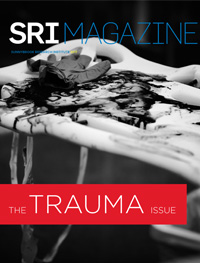A new angle on pain

Tool gives voice to women’s discomfort during labour
Dr. Pamela Angle has spent more than a decade learning the language moms-to-be use to describe their pain during childbirth in the birthing unit at Sunnybrook.
“Labour pain is more than one kind of pain. It consists of different types of pain. These differ in their presence, severity and levels of associated distress between women, and even within the same woman over time. You can’t really use the kind of scales we have now to understand it,” says Angle, director of the obstetric anesthesia research unit at Sunnybrook Research Institute and an associate scientist in the Women & Babies Research Program. “Existing tools were not developed out of a deep understanding of this phenomenon.”
The only multidimensional pain tools available for labour pain assessment derive from the McGill Pain Questionnaire, which did not include labouring women during its earliest phase of development. This gap led Angle and her team to develop the Angle Labour Pain Questionnaire (A-LPQ). The tool measures the five most important dimensions of women’s childbirth pain: enormity of the pain, fear and anxiety, uterine contraction pain, birthing pain and back pain/long haul. A companion tool, the Angle Pictorial Pain Mapping and Ranking Tool (A-PPMRT), is also available. It permits women to draw and name the different types of labour pain they are experiencing using anatomic diagrams and a list of pain names originally generated by labouring women.

The A-LPQ tool measures the five most important dimensions of labour pain. Women use the Angle Pain Mapping and Pain Ranking Tool to draw and name the different types of pain they experience.
Diagram: Michael Elia and Valerie Oxorn
Angle has conducted three validation studies for the A-LPQ. The first, published in the Clinical Journal of Pain, assessed the test-retest reliability of the tool during early active labour in 104 women without pain relief. Test-retest reliability assesses if the measure is stable over time. The study also looked at the scale’s sensitivity to change—its capacity to detect change when it occurs—as well as the A-LPQ’s responsiveness to minimal changes in pain over time. The second study, published in Anesthesia and Analgesia, examined the scale’s sensitivity to change in women who received epidural pain relief.
“These studies showed that the A-LPQ had excellent test-retest reliability, was sensitive to change and was extremely responsive to minimal changes in pain,” says Angle, who is an associate professor of anesthesiology at the University of Toronto.
Results from the third study, which will be submitted soon for publication, found that women in early active labour have excellent recall of the pain they experienced just before receiving an epidural, when they were asked to rate that pain within 20 to 30 minutes of receiving an epidural. That’s important, says Angle, “because it’s very difficult to study women in pain, particularly when that pain is severe. We have a great gap in our knowledge of women’s physical pain experiences during late labour and in women with obstructive labour.” Multidimensional measurement of women with this type of pain is typically done much later, after delivery, because women are simply unable to answer the questions.
Taken together, the findings suggest that the scale will be useful in clinical trials and other studies of pain during labour, says Angle. Further, she notes that the approach is groundbreaking, and will soon be used in practice globally to help clinicians understand, manage and treat labour pain. “The A-LPQ and the A-PPMRT were developed directly from the voices of women, from their words, their pictures, their experiences—the women have been my teachers, and this new approach to understanding their pain will allow them to teach others to better care for them,” she says.
— Eleni Kanavas
Angle’s research is funded by an AFP Innovation Award at Sunnybrook, the Langar Foundation (Toronto), and the Ontario Ministry of Health and Long-Term Care.



